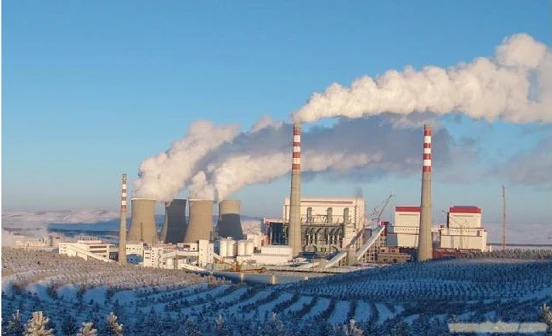Boiler Terminology Explanation (Part 4)
Boiler Terminology Explanation (Part 4)
31.Thermal Power System (Thermal power system; steam/water flow system)
A system that realizes the thermal cycle and heat-work conversion. Various thermal equipment, based on specific roles and functions in the production process, are connected and integrated into a working whole through pipelines. The thermal power system should be optimized based on the given tasks and operational modes of the thermal power plant, serving as the basis for selecting the type and capacity of the boiler and steam turbine, the capacity, parameters, and number of various auxiliary machinery and equipment, as well as the pipe diameter of steam-water pipelines and the type and quantity of valves, such as the Hastelloy C276 high pressure seal gate valve. This optimization aims to achieve the best match under the given operational conditions, ensuring better economy, operational reliability, flexibility, and the ability to handle accidents or abnormal working conditions.
32.Thermodynamic System (Thermodynamic system)
A specific range of matter or space selected as the subject of analysis in thermodynamics. It is commonly abbreviated as the thermodynamic system or simply "system" in certain contexts. Matter or space outside of the thermodynamic system is collectively referred to as the environment (or surroundings). The environment is defined only in relation to the system, and a part of the environment can also be separated out to form another thermodynamic system.
33.Thermodynamic Cycle (Thermodynamic cycle)
A closed thermodynamic process in which the working substance starts from one thermodynamic state, undergoes a series of changes, and eventually returns to its original thermodynamic state.
34.Positive Cycle
A thermodynamic cycle is called a positive cycle if its net work is positive. In other words, if the cycle's overall effect is to absorb heat from the heat source and do work externally, it is referred to as a positive cycle.
35.Negative Cycle
A thermodynamic cycle is called a negative cycle if its net work is negative. In other words, if the cycle's overall effect is to consume external work and release heat to the heat source, it is referred to as a negative cycle.
36.Reversible Cycle
If all the processes forming the cycle are reversible, it is called a reversible cycle.
37.Irreversible Cycle
If any of the processes forming the cycle are irreversible, it is called an irreversible cycle.
38.Zeroth Law of Thermodynamics
A law in thermodynamics that establishes the concept of temperature based on the thermal equilibrium of thermodynamic systems. It is typically stated as: If two systems are each in thermal equilibrium with a third system, then these two systems must also be in thermal equilibrium with each other. This fact was first formulated by C. Maxwell as an empirical law after the establishment of the first law of thermodynamics, so it is called the zeroth law of thermodynamics. The zeroth law indicates that every system has a macroscopic property—temperature—that measures whether it is in thermal equilibrium with other systems. Temperature is solely dependent on the system's state and is a state parameter. The zeroth law allows for the construction of thermometers.
39.First Law of Thermodynamics
One of the fundamental laws of thermodynamics, it is a form of the energy conservation principle. It states: Energy can be transferred between a thermodynamic system and its surroundings, and it can be converted between different forms of energy. During this transfer and conversion, the total energy remains constant, neither increasing nor decreasing. Another statement is: The first kind of perpetual motion machine, which operates without consuming energy, is impossible to achieve. It generalizes the concept of energy in mechanics by linking thermal energy, internal energy, mechanical energy, and other forms of energy.
40.Second Law of Thermodynamics
One of the fundamental laws of thermodynamics, typically stated as: Heat can spontaneously flow from a hotter object to a cooler one, but it cannot spontaneously flow from a cooler object to a hotter one. It can also be expressed as: The friction between two objects results in the conversion of work into heat, but this frictional heat cannot be converted back into work, without causing other effects. The second law of thermodynamics is an important complement to the first law of thermodynamics.

 +86 512 68781993
+86 512 68781993 


















